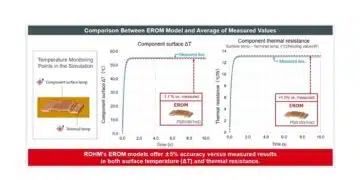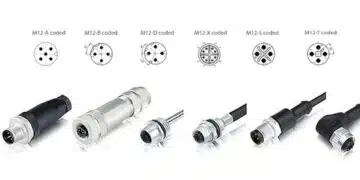This Würth Elektronik webinar focuses on the basics of electromagnetic compatibility (EMC) related to the use and applications of electromechanical inter-connection components.
What is electromagnetic compatibility, what does it have to do with a flower and a bee, and how can I apply the knowledge conveyed to use it in my application?
What impact does the layout have on my electromagnetic compatibility, and what electromechanical inter-connection components can I use to improve this compatibility?
Electromagnetic Compatibility (EMC) with Electromechanical Connectors
This presentation delves into the critical subject of Electromagnetic Compatibility (EMC) within the context of Electromechanical Connectors. It explores fundamental principles, coupling effects, layout concepts, signal integrity, and shielding methods necessary for achieving optimal EMC performance in electronic applications.
1. Introduction
Electromagnetic Compatibility (EMC) compliance is not just a design consideration but a legal mandate across various regions. Its importance is underscored by stringent regulatory standards governing radiated emissions, immunity, Electrostatic Discharge (ESD), and conducted emissions. This document aims to provide an in-depth technical overview of EMC principles, focusing on practical implementation in electronic systems.
2. Fundamentals of EMC
2.1 Definition and Importance
EMC ensures that electronic systems operate without interference from or causing interference to other systems within their environment. Key EMC parameters include:
- Radiated Immunity and Emission
- Conducted Immunity and Emission
- Electrostatic Discharge (ESD) Compliance
2.2 Regulatory Framework
EMC guidelines vary globally but maintain comparable thresholds. For instance, Austria’s EMC directives align closely with those in Spain, ensuring uniform compliance across EU nations.
3. Coupling Mechanisms
EMC issues arise from several coupling effects:
- Capacitive Coupling: Dominant where electric fields prevail, leading to parasitic capacitance between conductors.
- Inductive Coupling: Arises from magnetic fields inducing currents in adjacent conductors.
- Galvanic Coupling: Occurs when two circuits share a common return path, causing interference.
- Electromagnetic Wave Coupling: Involves near-field dominance of either electric or magnetic components.
4. Layout Concepts and Signal Integrity
4.1 Layer Design Optimization
Effective EMC design starts with PCB layout consideration:
- Continuous Ground Planes: Minimize impedance and maintain signal integrity.
- Minimizing Loop Areas: Reduces antenna effect, thus lowering EMI susceptibility.
- Via Placement Strategies: Avoid unnecessary layer transitions to prevent impedance mismatches.
4.2 Transmission Line Theory
Signals prefer paths of least impedance, not necessarily the shortest physical route. Design considerations include:
- Characteristic impedance matching
- Return path continuity
- Avoiding split ground planes
4.3 Filtering Techniques
Filters (e.g., common mode chokes, capacitors) are crucial for suppressing noise but should be complemented with robust layout practices for maximum effectiveness.
5. Shielding Design Principles
5.1 Purpose of Shielding
Shielding mitigates radiated emissions and improves immunity. Effective shielding requires:
- Correct material selection (e.g., tin-plated, nickel-plated)
- 360° contact around connectors
- Avoiding galvanic corrosion between dissimilar metals
5.2 Grounding Strategies
Shield grounding can be applied:
- Single-Ended Grounding: Preferred for high-impedance circuits.
- Double-Ended Grounding: Effective for mitigating common-mode currents.
- Capacitive Grounding: Combines benefits of both, reducing DC ground loops while maintaining high-frequency noise suppression.
6. Practical Considerations and Case Studies
6.1 Real-World EMC Failures
Examples highlight the effects of poor grounding, improper shielding, and suboptimal layout designs. Corrective actions include:
- Adding ground vias
- Improving connector grounding
- Re-routing critical signal traces
6.2 EMC Testing and Validation
Testing environments (e.g., EMC chambers) simulate real-world conditions to validate compliance. Key measurements include:
- Conducted and radiated emissions
- Susceptibility to external electromagnetic fields
7. Conclusions and Recommendations
Successful EMC compliance integrates thoughtful design, robust layout practices, effective filtering, and strategic shielding. Continuous learning and adaptation to emerging standards are essential for sustained performance.































